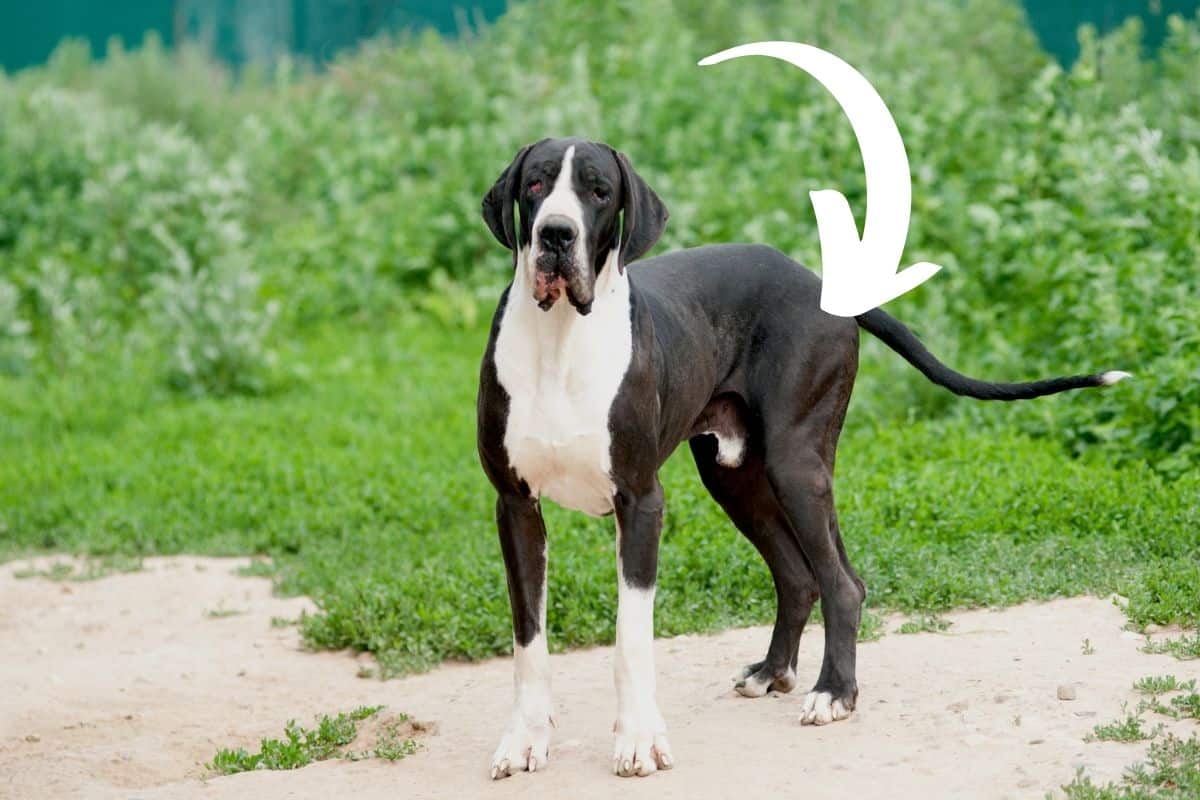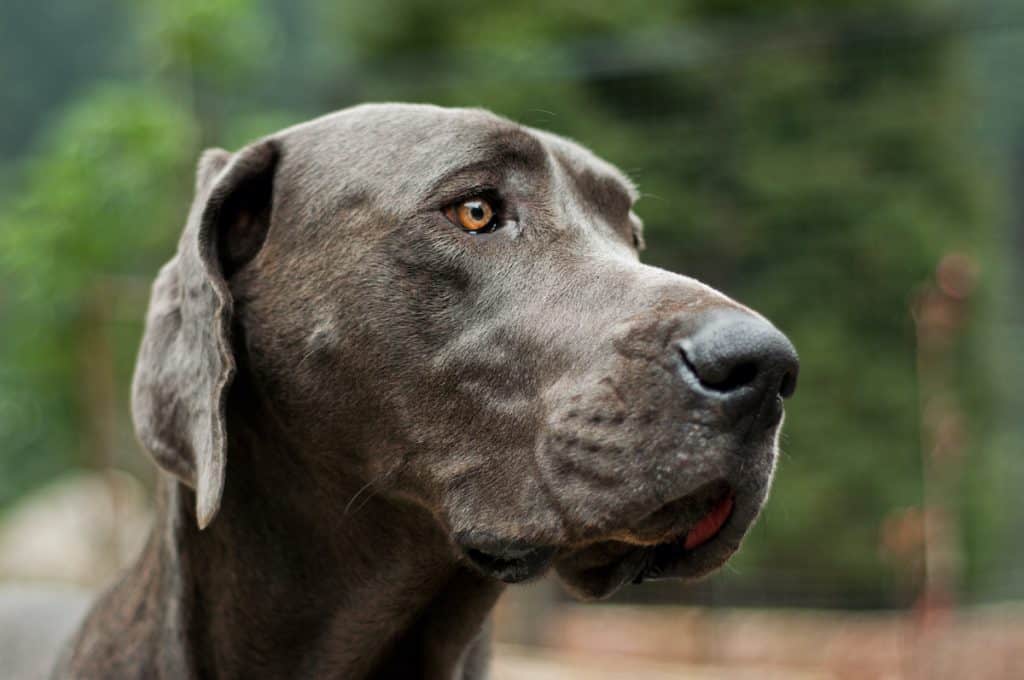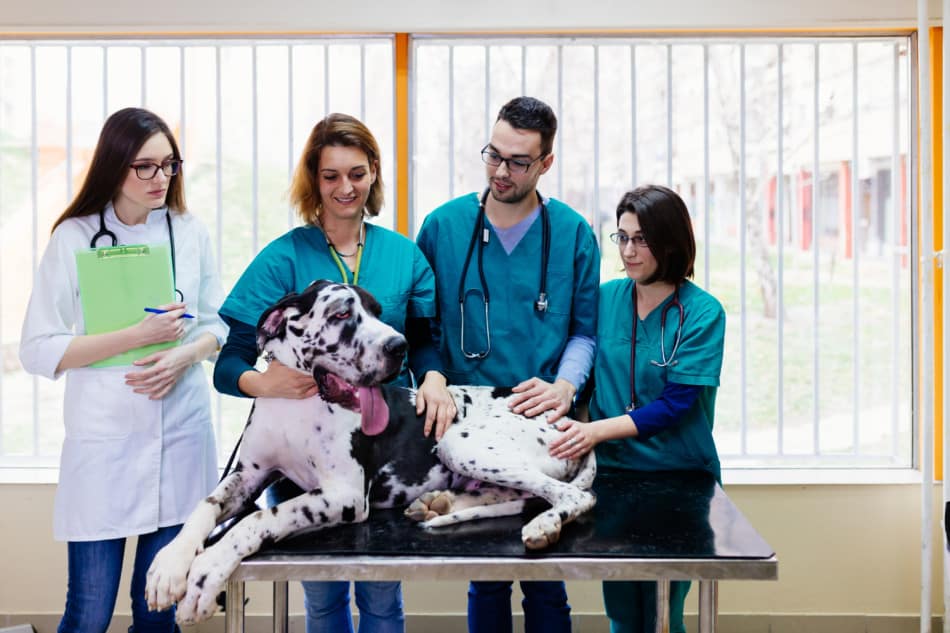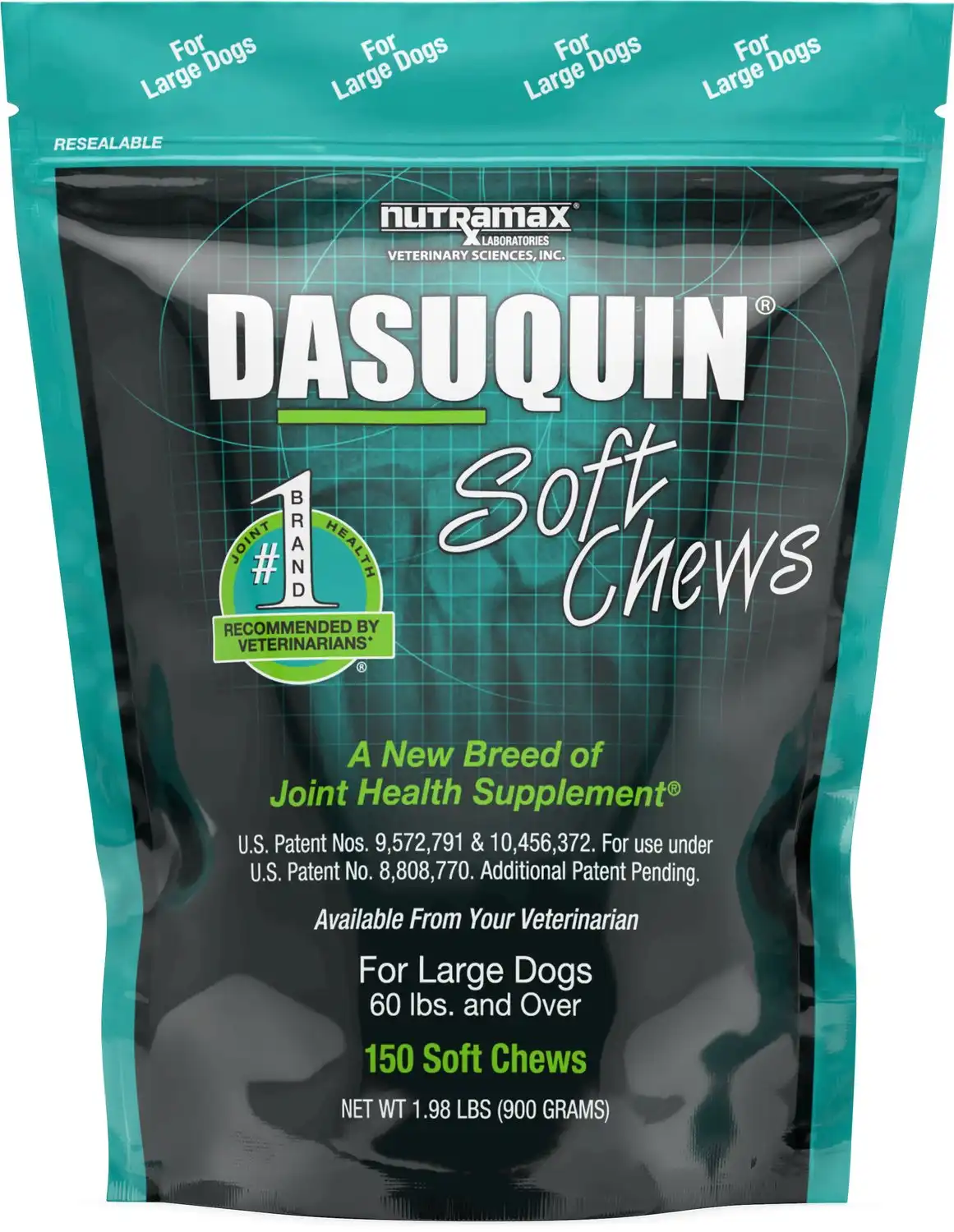
This post contains affiliate links and I will be compensated if you make a purchase after clicking on my links.
Does your Great Dane have hip pain or noticeable hip issues? You may notice they are having trouble getting up and limping when walking.
There are many things that you can do at home to help your Great Dane with their hip pain, and sometimes it is best to see your vet.
How to know if your dog has hip pain
Sometimes the signs of hip pain can be very subtle.
These are some of the most common signs of hip pain in Great Danes:
- Limping
- Trouble standing, especially early in the morning
- Whining in pain when they are moving
- Decrease muscle mass in their legs
- Not wanting to climb stairs
- Bunny hopping walk
- Dragging legs when walking

Why Great Danes develop hip pain
There are a few health conditions that can cause your Great Dane to be painful in their hips.
The most common two are hip dysplasia and arthritis. Let’s take a closer look at each of these.
1. Hip Dysplasia
Hip Dysplasia occurs when your Great Danes hip joint does not properly form. This will cause the hip to not fully fit into the joint.
The hip joint is a ball and socket type joint. If the head of the femur, which forms a ball, does not fully fit into the socket of the hip. This will cause your dog’s hip to pop out of the socket sometimes.
This can cause arthritis to build up around your dog’s hip joint and can be very painful. Most dogs with hip dysplasia will have pain in their hip.
Your vet can diagnose hip dysplasia by taking x-rays of your dog’s hips and performing an orthopedic exam of their hips
2. Arthritis
As your Great Dane gets older, it can develop arthritis. This commonly occurs in your dog’s knees and hips. Many dogs with arthritis will have issues standing and may be limping.
Arthritis is diagnosed by an x-ray. Your vet will be able to see bonny changes around your Great Danes joints to tell if there is any arthritis build-up.
How is hip pain diagnosed?
Your vet can determine if your Great Dane has hip pain based on their initial exam and a history of limping from you.
Your vet will also want to run some tests and do an extended orthopedic examination to determine the cause of the hip pain. These are other things that your vet may suggest.
1. Full Orthopedic Exam
Your vet will want to do a full orthopedic examination on your Great Dane. This will include extending and stretching their legs and hips to feel for any pops or cracks.
Sometimes your vet will want to sedate your dog for this procedure. That way, they are able to move their leg freely without causing extra pain to your Great Dane.
2. Radiographs
If your Great Dane has hip pain, your vet will want to take x-rays of their hips. This will determine if there is any arthritis in their hips or if they have hip dysplasia.
X-rays will also show any other issues with your dog’s hip bones.

Treating Great Dane hip pain
If your Great Dane does have hip pain, there are many different things that you can do. Some of these can be done at home, while others will need to see your vet.
Home Treatment Options
With mild hip pain issues, you can try a few at-home tips and tricks to help your Great Dane feel much better.
These are some of the things that you can do at home to help your Great Dane’s hip pain:
1. Joint supplements
For mild signs of hip pain, you can give your Great Dane hip and joint supplements. Many of these contain glucosamine and chondroitin.
Two great joint supplements that you can use are Dasaquin and Glycoflex. The number of chews will be adjusted based on your Great Dane’s weight.
Dasuquin is the #1 joint health brand recommended by veterinarians and combines the demonstrated benefits and synergies of ASU, glucosamine, and chondroitin sulfate. Convenient soft chews provide a simplified, tasty experience for supporting your dog’s joint health!
Recommended by veterinarians for over 30 years, this formula offers higher levels of glucosamine, MSM and perna canaliculus for superior joint care.
2. Rest!
If your Great Dane has suddenly started having hip pain, allowing them to rest for a few days can help.
It is best to take your Great Dane out to potty on a leash and not take them for a long walk. Many times a few days of rest will help your Great Dane’s hips feel much better.
3. Applying an Ice pack to the hips
If your Great Dane’s hips are painful, you can apply an ice pack to the hips twice a day. It is best to wrap the ice in a thin towel and not apply the ice pack directly to your Great Dane’s skin.
You can keep this ice pack on for a max of 15 minutes twice a day or as long as your Great Dane will let you.
4. Make sure your Great Dane is at a healthy weight
If your Great Dane is overweight, this will put extra weight on your Great Dane’s joints. Make sure that your Great Dane is not carrying around extra weight.
If your dog is on the heavier side, it is best to help them lose weight. One way to quickly help your Great Dane lose weight is to decrease the amount of food that your dog is eating just a little bit and increase their exercise.
This is a healthy way for your Great Dane to quickly and easily lose weight!
If your dog does not improve after a few days of these at-home remedies, it would be best to see your vet.
Veterinarian Treatment Options
If your Great Dane has more severe hip pain that is not getting better with these at-home treatments, your vet may prescribe some of these other treatment methods
- Non-Steroidal Anti-inflammatory (NSAIDs) medications: There are many different NSAIDs that your vet may prescribe to your Great Dane. These will be given to help decrease pain and inflammation in your dog’s joints
- Steroids: your vet may recommend that your dog has steroids. These will help decrease any inflammation in your Great Dane joints.
- Hip surgery: If your dog has hip dysplasia, your vet will recommend that your dog has surgery. There are a few different types of surgery depending on the severity of the disease. Some of these surgeries are total hip replacements, and others are removing the head of the femur to decrease arthritis in the hip joints. In young puppies with hip issues, there are procedures that can be done to help prevent your Great Dane from developing severe hip dysplasia and hip pain.
- Physical Therapy: Dog physical therapy can help strengthen your dog’s hip joints to decrease pain and inflammation. Low-impact exercise is the best! This would include things like swimming or short slow walks.
- Cold Laser Therapy: Many vets can do cold laser therapy, which provides a beam of laser to your dog’s hips to decrease the inflammation and pain in the joints. Many times, after just a few treatments, your Great Dane will be walking around normally.
- Acupuncture: Recently, more veterinarians are learning about holistic medicine. Things like acupuncture are becoming more popular, especially in bigger cities. This is a small needle that is placed into your dog’s body at a certain spot. Then electrodes at hooked to these needles to help decrease inflammation and pain in your Great Danes joints.
Ways to help prevent hip pain in Great Danes
Sometimes no matter what you do, you cannot decrease hip pain in your Great Dane.
These are a few things that you can do to help.
- Pick good genetics: Many hip issues are genetic. The parents of your Great Dane can be screened for signs of hip dysplasia. Most breeders will have their parent’s OFA certified that they are free of hip dysplasia.
- Start your dog on joint supplements: You can start your Great Dane on hip supplements when your dog is young. This can help start preventing hip issues and hip pain before they start having issues.
- Providing them with a low-impact exercise: When your Great Dane is young, it is best to give your Great Dane low-impact exercise that they can do. It is best not to take your Great Danes for very long runs until they are fully grown and their joints are fully developed. This does not occur until your Great Dane is two years old.
- Give your Great Dane the Proper Nutrition: Great Danes are large breed dogs. These dogs will need a large breed dog food, especially when they are puppies. Large breed puppy food is specially designed to take care of your Great Dane’s fast-growing body and bones. By not feeding them the proper diet, you can cause your Great Dane to not properly develop.
Final Thoughts on Great Dane Hip Pain
If your Great Dane has hip pain, it is best to figure out what is causing this pain so that you can start to fix these issues and decrease your Great Dane’s pain.
Hip pain can be caused by arthritis or hip dysplasia. Your vet will take x-rays to figure out which one. If your Great Dane just has mild hip pain, you can try a few of these tips and tricks to help decrease this pain in your Great Dane.
In severe cases, your Great Dane may need surgery to fix its issues. If your Great Dane is very painful, it is best to see your vet right away to make sure that your Great Dane can quickly recover.


